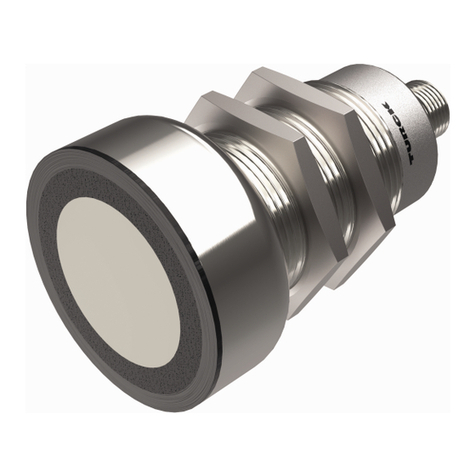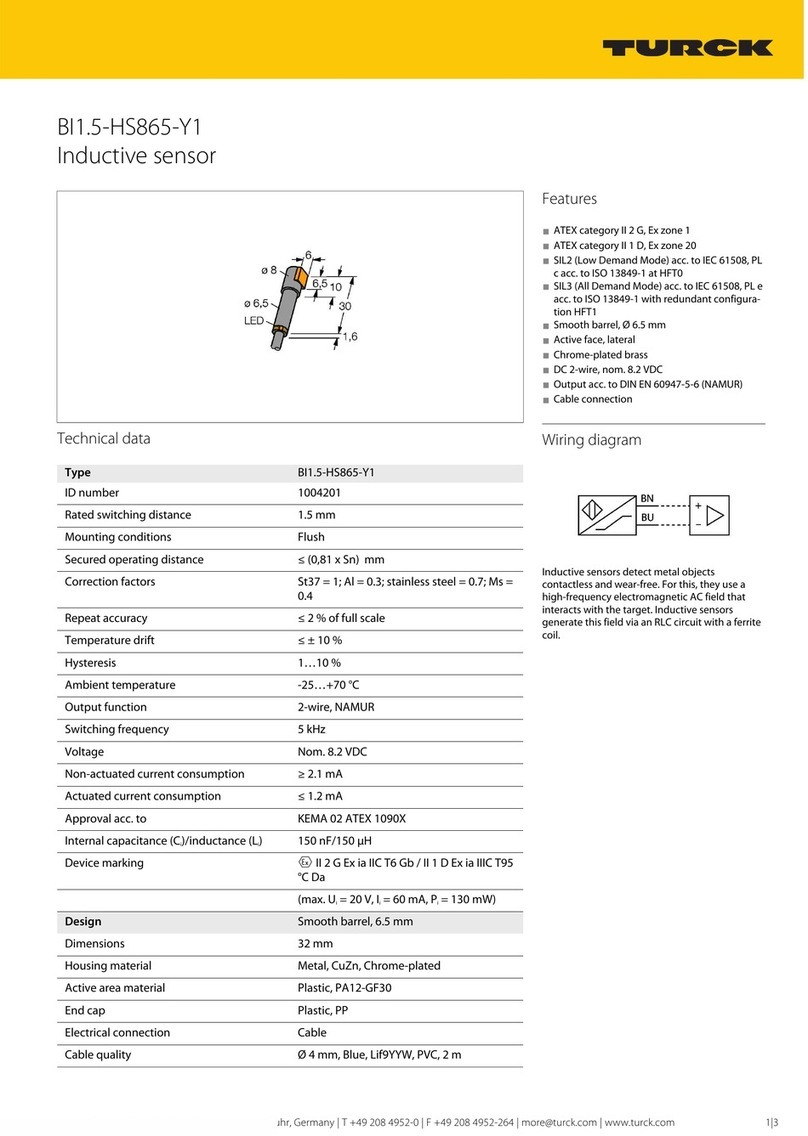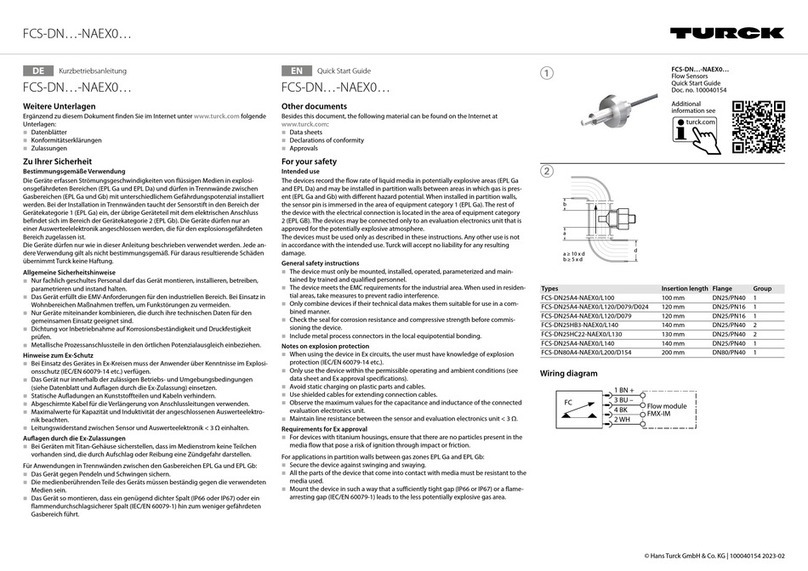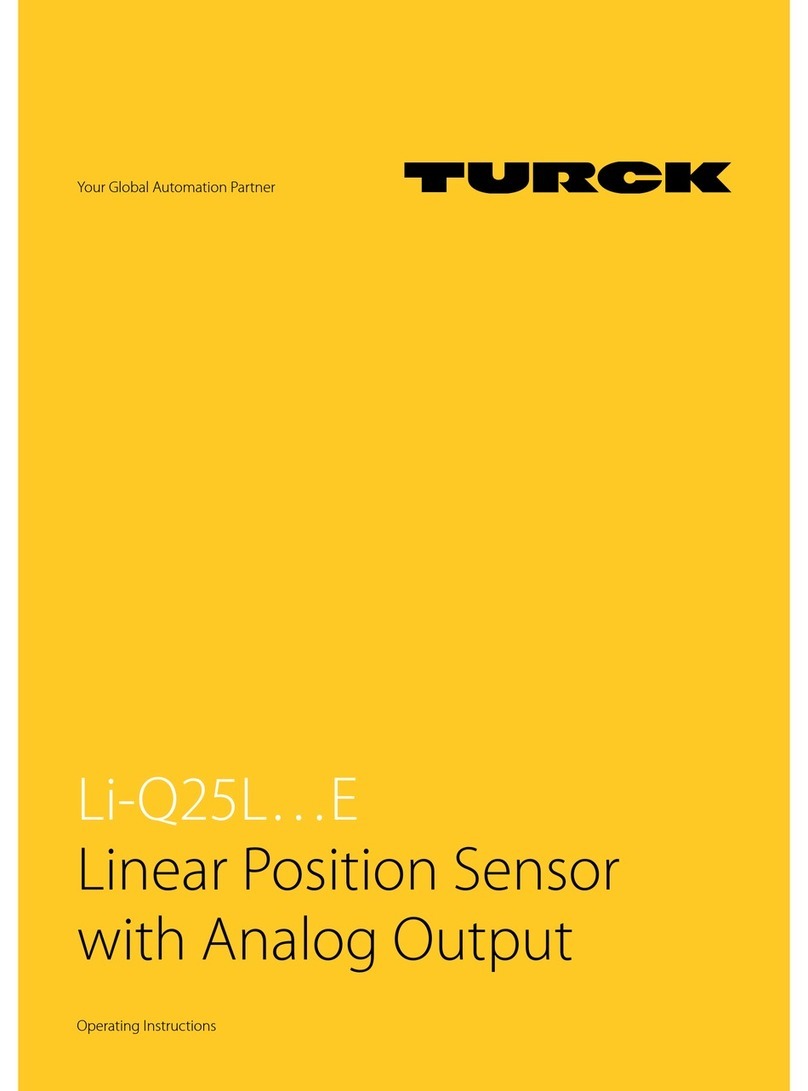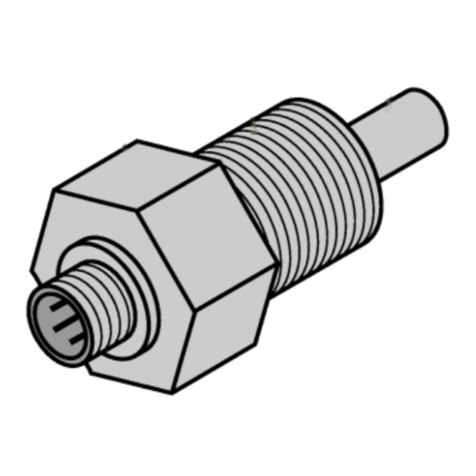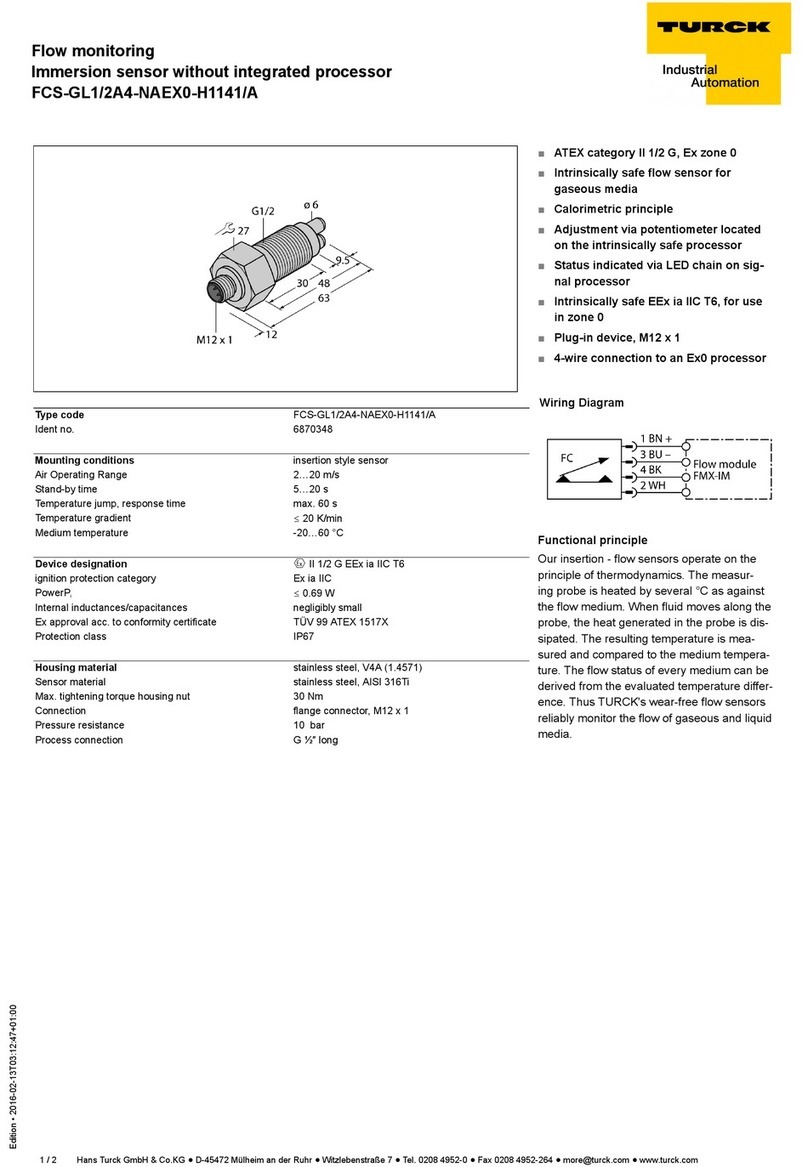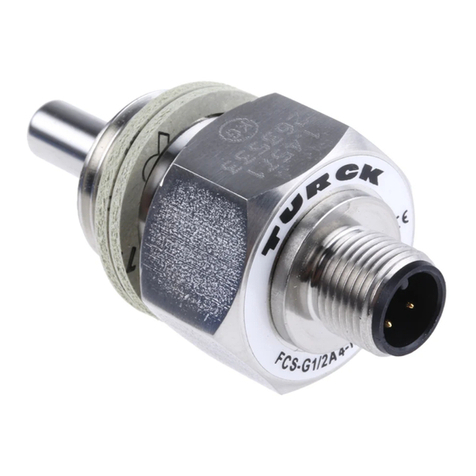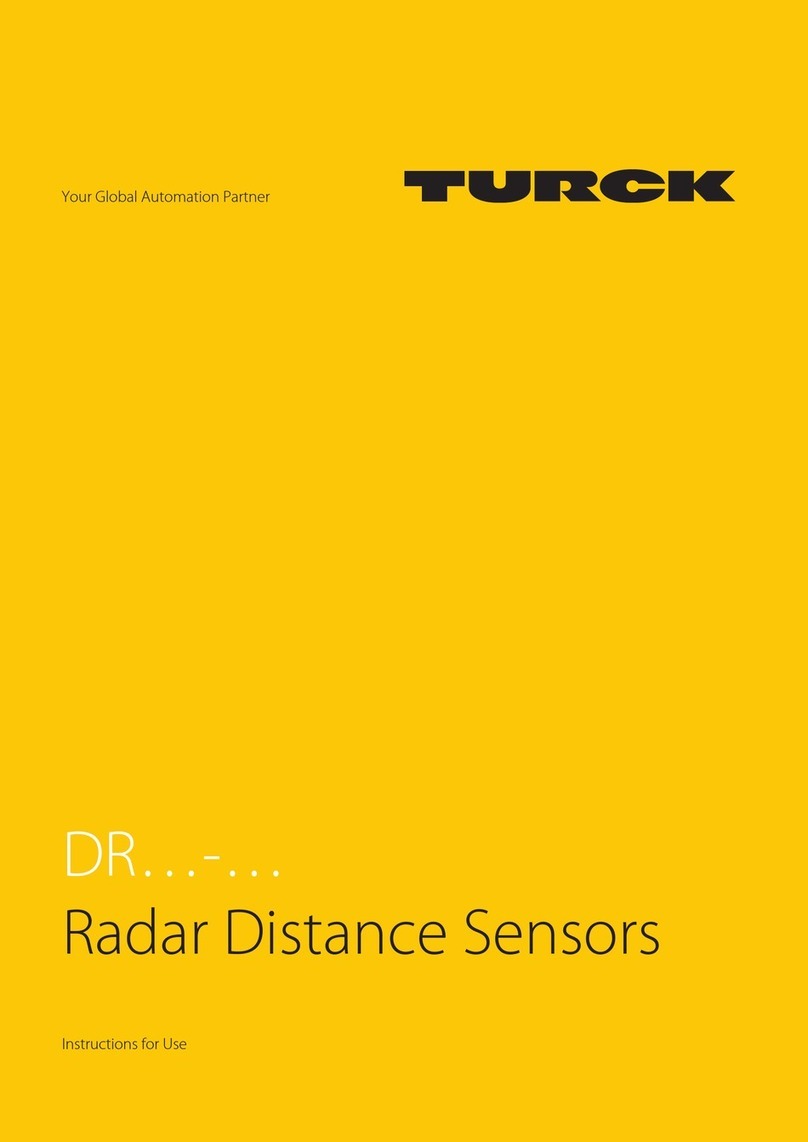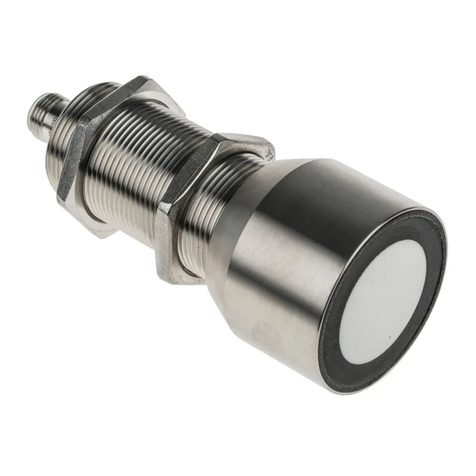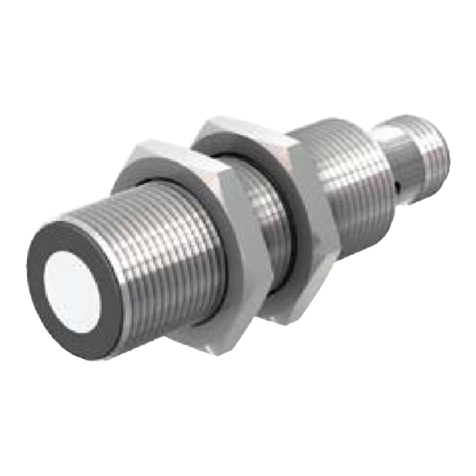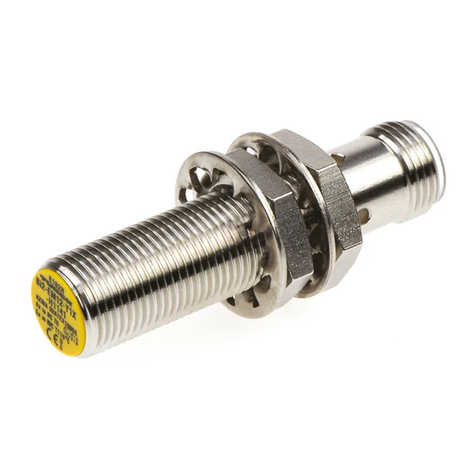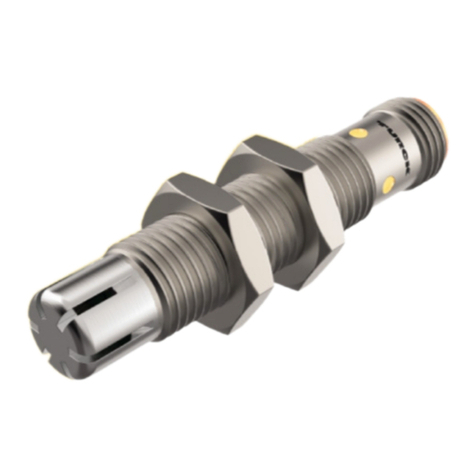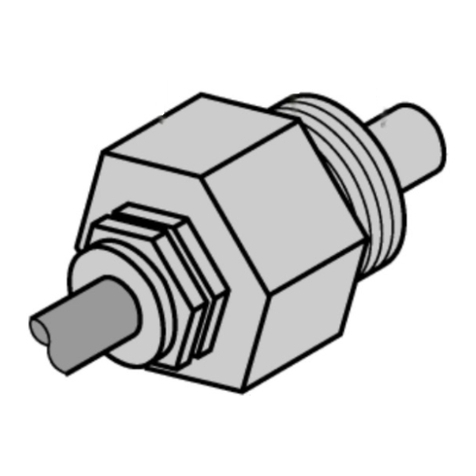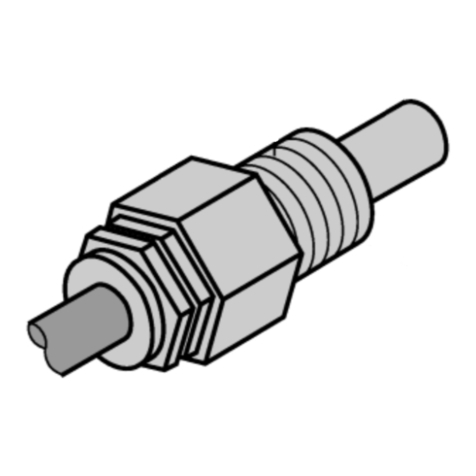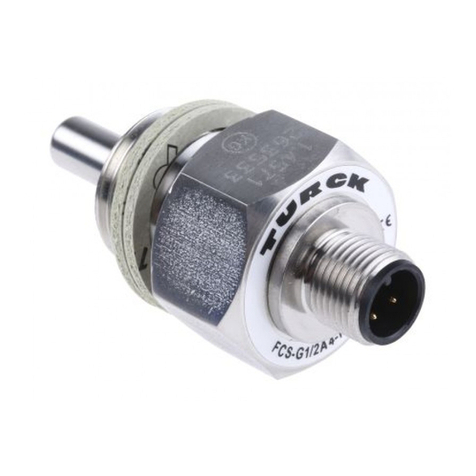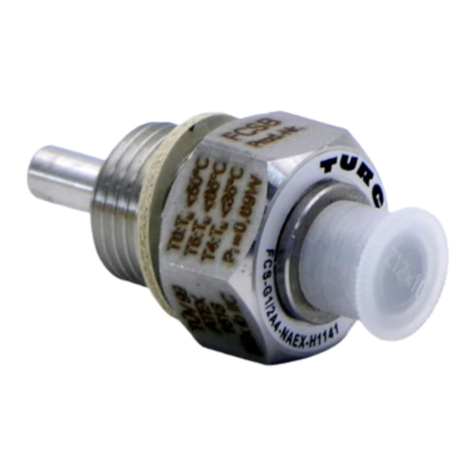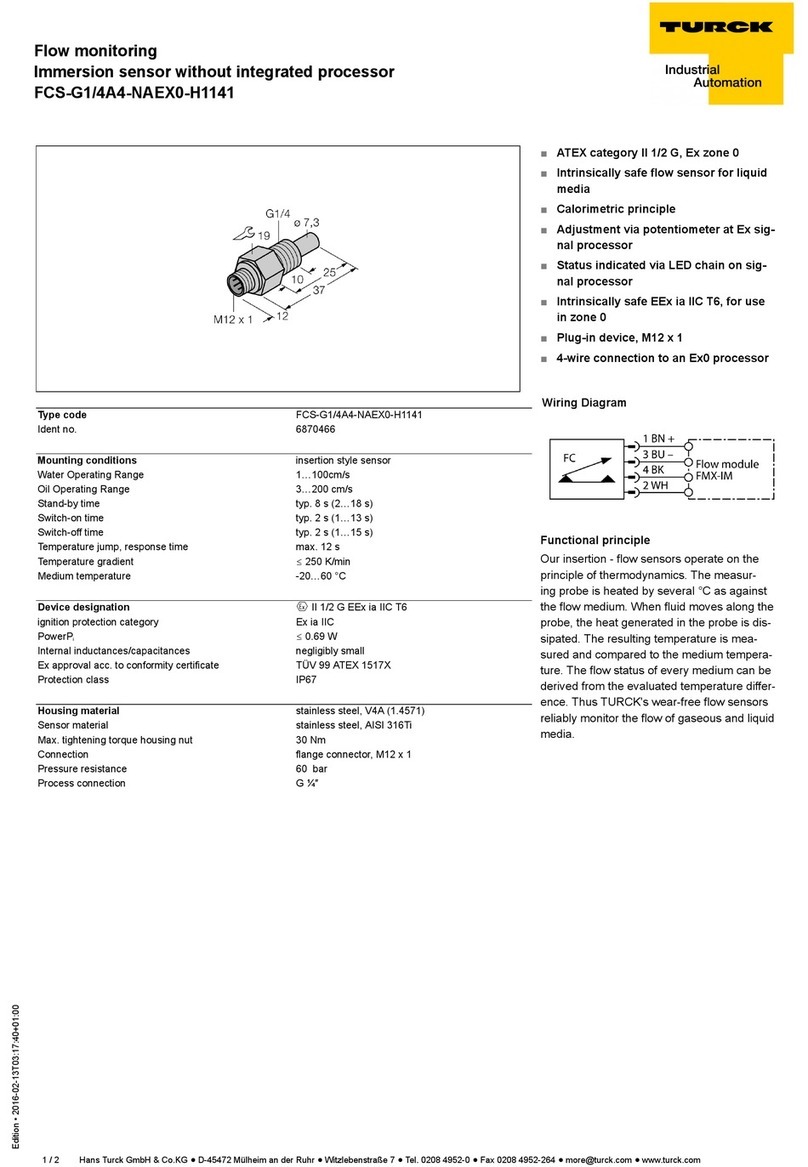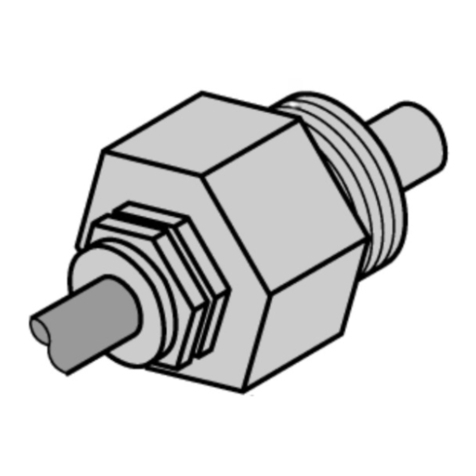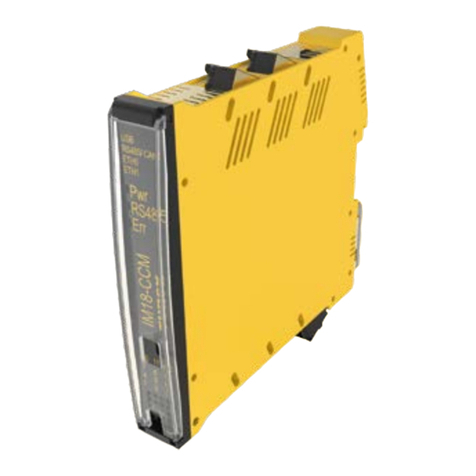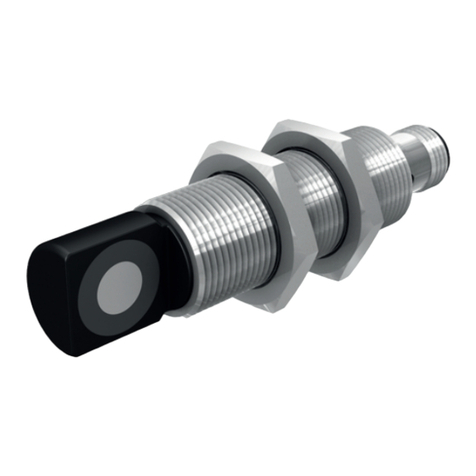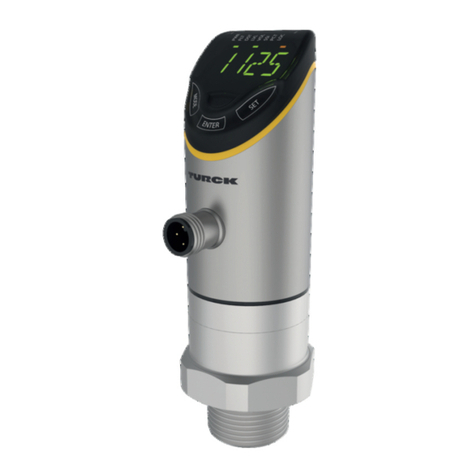
Inductive
dual sensor for rotary actuators
NI4-DSU35TC-2AP4X2/3GD
Edition • 2013-07-13T05:12:10+02:00
1 / 4
Hans Turck GmbH
& Co.KG
ñ D-45472 Mülheim an der Ruhr ñ Witzlebenstraße 7 ñ Tel. 0208 4952-0 ñ Fax 0208 4952-264 ñ [email protected] ñ www.turck.comType code NI4-DSU35TC-2AP4X2/3GD
Ident no. 1569911
Rated operating distance Sn 4 mm
Mounting condition non-flush
Correction factors St37 = 1; Al = 0.3; stainless steel = 0.7; Ms = 0.4
Repeatability ð 2 % of full scale
Temperaturdrift 10 %
Hysteresis 3…15 %
Ambient temperature -25…+70 °C
Operating voltage 10…65VDC
Residual ripple ð 10 % Uss
DC rated operational current ð 200 mA
No-load current I0ð 15 mA
Residual current ð 0.1 mA
Rated insulation voltage ð 0.5 kV
Short-circuit protection yes/ cyclic
Voltage drop at Ieð 1.8 V
Wire breakage / Reverse polarity protection yes/ complete
Output function 4-wire, NO contact, PNP
Valve control ð 60 V / ð 20W
Switching frequency 0.05 kHz
Approval acc. to ATEX test certificate TURCK Ex-03020H
Device designation Ex II 3 G Ex nA IIC T5 Gc/ II 3 D Ex t IIIC T100°C Dc
IP67
Design dual sensor for valve monitoring, DSU35
Dimensions 62x 60x 35 mm
Housing material Plastic, PP, yellow
Material active face Plastic, PP, Black
Connection Terminal chamber
Clamping ability ð 2.5 mm2
Vibration resistance 55 Hz (1 mm)
Shock resistance 30 g (11 ms)
Protection class IP67
MTTF 2283 years acc. to SN 29500 (Ed. 99) 40 °C
Switching state ññ yellow / red
Included in scope of supply 2 ATEX cable glands (black), 2 blanking plugs for
cable glands, 1 M20x1 blanking plug
■ATEX category II 3 G, Ex Zone 2
■ATEX category II 3 D, Ex Zone 22
■Rectangular, housing DSU35
■Plastic, PP-GF30-VO
■Two outputs for monitoring the position
of rotary actuators
■Mounting on all standard actuators
■2 x NO contacts, PNP output
■DC 4-wire, 10…63 VDC
■Terminal chamber
Wiring diagram
Functional principle
Inductive sensors detect metal objects con-
tactless and wear-free. Dual sensors are es-
pecially designed for position detection in ro-
tary actuators. They combine the reliability of
non-contact inductive sensors with the flexibil-
ity of a modular housing system.
